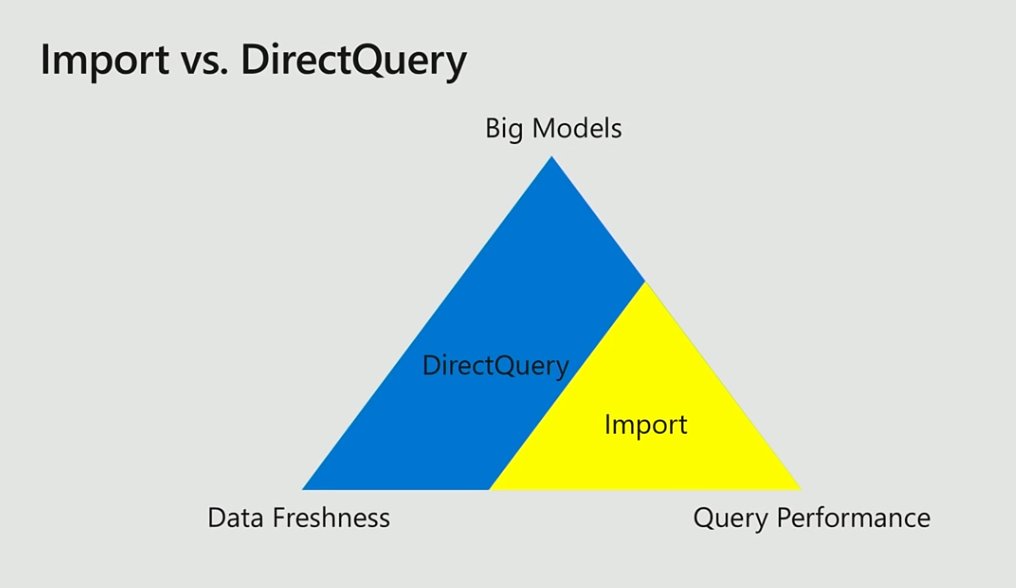| Editorial Team

Microsoft’s business analytics service, Power BI, offers two primary data connectivity modes: Import and Direct Query. Choosing between these modes can significantly impact your Power BI experience. In this article, we’ll delve into the nuances of Power BI Import vs. Direct Query, exploring the differences, advantages, and scenarios where each mode excels.
Power BI Import vs. Direct Query
Import Mode:
Data is loaded and stored within the Power BI model in Power BI Import mode. This mode is ideal for scenarios where you need quick and efficient analysis, especially with smaller datasets.
Direct Query:
Direct Query, however, allows Power BI to retrieve and display data directly from the source without storing it locally. This is beneficial for real-time analytics, ensuring you always use the latest data.
Change from Direct Query to Import:
Why Consider the Switch?
Understanding when to transition from Direct Query to Import is crucial. If your data source undergoes changes or performance becomes an issue, moving to Import mode might be the solution. This switch ensures faster report rendering and improved user experience.
How to Change:
Changing from Direct Query to Import in Power BI involves accessing the Power Query Editor and modifying the data load settings. We’ll guide you through the steps, making the transition seamless.
Difference Between Direct Query and Import:
Performance:
Import mode generally delivers faster performance as the data is stored locally. Direct Query excels in scenarios where real-time data is crucial but might introduce latency.
Storage and Refresh:
Imported data is stored within the Power BI file, allowing offline access. In contrast, Direct Query always fetches the latest data from the source, ensuring real-time insights.
Data Volume:
Import is suitable for smaller datasets, while Direct Query handles larger volumes without extensive storage capacity.
Power BI Import Mode: A Closer Look
Advantages:
- Faster report rendering.
- Offline access to data.
- Suitable for smaller datasets.
Considerations:
- Limited to periodic data refreshes.
- Storage constraints for large datasets.
Power BI Direct Query: A Comprehensive Overview
Advantages:
- Real-time data access.
- No local storage limitations.
- Suitable for large datasets.
Considerations:
- Potential for slower report rendering.
- Requires a stable and fast data source connection.
Conclusion:
Choosing between Power BI Import and Direct Query modes
depends on your specific business needs, dataset size,
and performance requirements. Understanding the
distinctions and making informed decisions will empower
you to leverage Power BI effectively for your analytics
and reporting needs.
In the ever-evolving landscape of business intelligence,
navigating the intricacies of Import and Direct Query
modes can make a significant difference in harnessing
the full potential of Power BI.
FAQs
What is the primary difference between Power BI Import and Direct Query?
The key distinction lies in how data is handled. Import mode stores data locally within Power BI, while Direct Query fetches and displays data directly from the source without storing it locally.
When should I use Power BI Import mode?
Import mode is suitable for scenarios where quick analysis is needed, especially with smaller datasets. It provides faster report rendering and offline access to data.
In what situations is Direct Query preferable?
Direct Query is beneficial when real-time access to the latest data is crucial. It excels in scenarios with large datasets and ensures that the insights are always based on the most up-to-date information.
How can I change from Direct Query to Import mode in Power BI?
Changing from Direct Query to Import involves accessing the Power Query Editor and modifying data load settings. The process is explained step-by-step in the article.
What considerations should I consider when switching from Direct Query to Import?
Consider switching if your data source undergoes changes or if performance becomes an issue. Import mode generally provides faster report rendering and improved user experience.
Are there limitations to using Power BI Import mode?
Import mode is limited to periodic data refreshes and may have storage constraints for large datasets. It is essential to evaluate these limitations based on your specific business needs.
Does Direct Query introduce latency in reporting?
Direct Query can introduce latency, especially in scenarios with complex queries or slower data source connections. However, it ensures real-time access to the latest data.
Can I work with Power BI offline in Direct Query mode?
No, Direct Query requires a live connection to the data source. It does not store data locally, so offline access is not possible.
What factors should I consider when choosing between Direct Query and Import for my Power BI project?
Consider factors such as performance requirements, data volume, need for real-time access, and the size of your datasets. The article provides a comprehensive guide to help you make an informed decision.
Are there any specific scenarios where both Import and Direct Query modes can be used together?
In some cases, a hybrid approach can be adopted, utilizing both Import and Direct Query modes for different datasets within the same Power BI report. This allows for flexibility based on specific data requirements.

